This Bath Beach Synagogue Was Designed by Emery Roth Before He Was Famous
In 1918, the growing Congregation Sons of Israel in Bath Beach hired an up-and-coming Jewish architect to design their new synagogue at 2115 Benson Avenue.

Editors note: This post originally ran in 2014 and has been updated. You can read the previous post here.
In 1918, the growing Congregation Sons of Israel in Bath Beach hired an up-and-coming Jewish architect to design their new synagogue at 2115 Benson Avenue. His name was Emery Roth, destined to be one of 20th century New York’s most important architects, and the worship space he designed for the congregation still stands at the corner of 21st and Benson avenues.
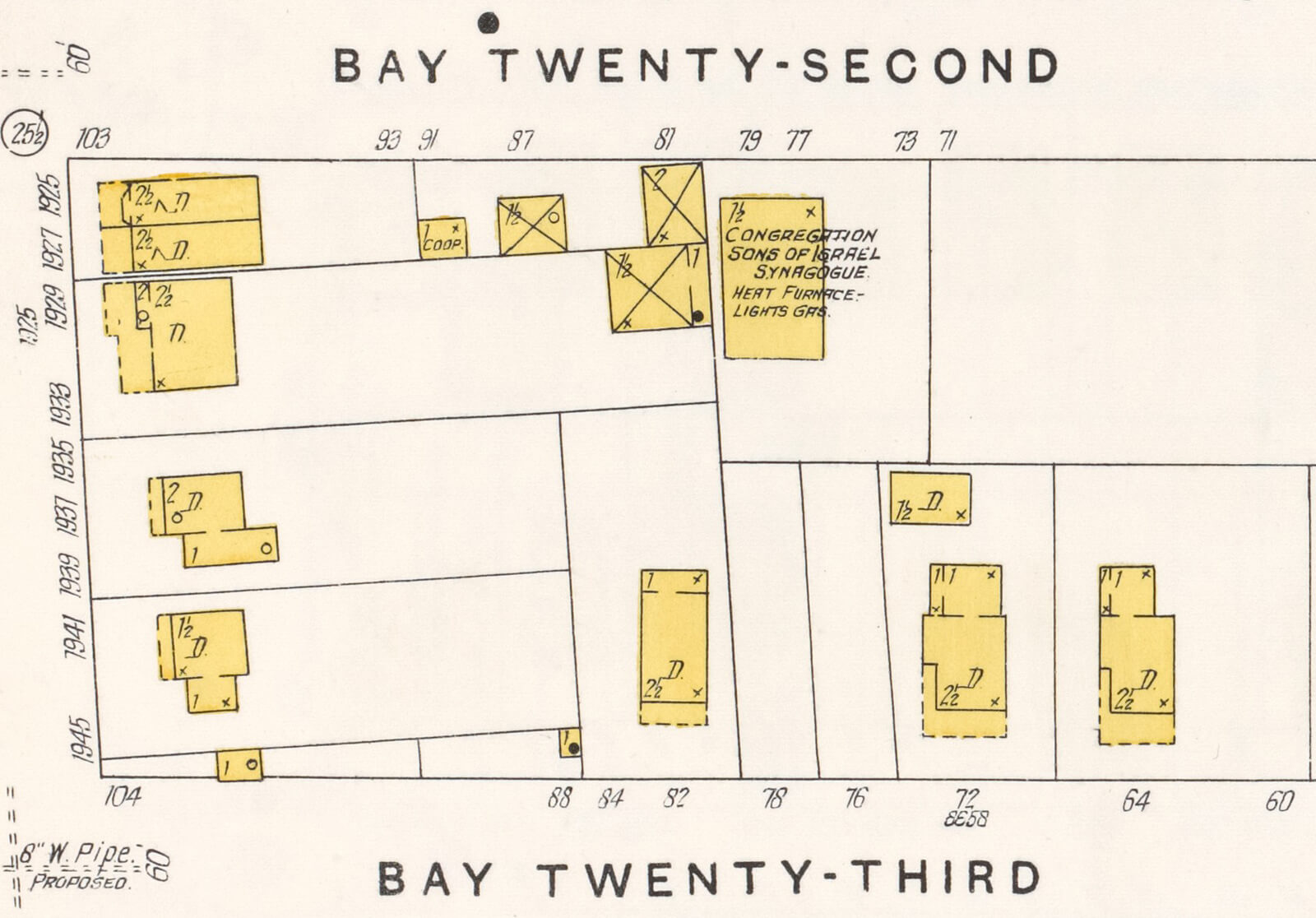
Bath Beach’s Congregation Sons of Israel was founded in 1896 by 60 Orthodox Jewish families who had settled in southern Brooklyn to build a community. They first met in rented spaces for services, and sometimes at members’ homes. Funds were immediately raised for their own worship space, and a year later, the cornerstone of a new synagogue was laid. The first Congregation Sons of Israel was located at Bay 22nd Street, near 86th and Benson avenues. Even though the building was not totally completed, they had a roof over their heads and enough done to welcome in the Jewish New Year with Rosh Hashanah services in 1898.

The community was desperate for more worship space by 1918 and were able to purchase a purchase a large corner plot on 21st and Benson avenues. Their architect, Emery Roth, already had at least one synagogue under his design belt — the Adath Jeshurun of Jassy Synagogue on Rivington Street on the Lower East Side. That building was built in 1903, the same year he designed the Hotel Belleclaire, on Broadway. The Belleclaire is a New York City Landmark, as are many of Roth’s buildings.
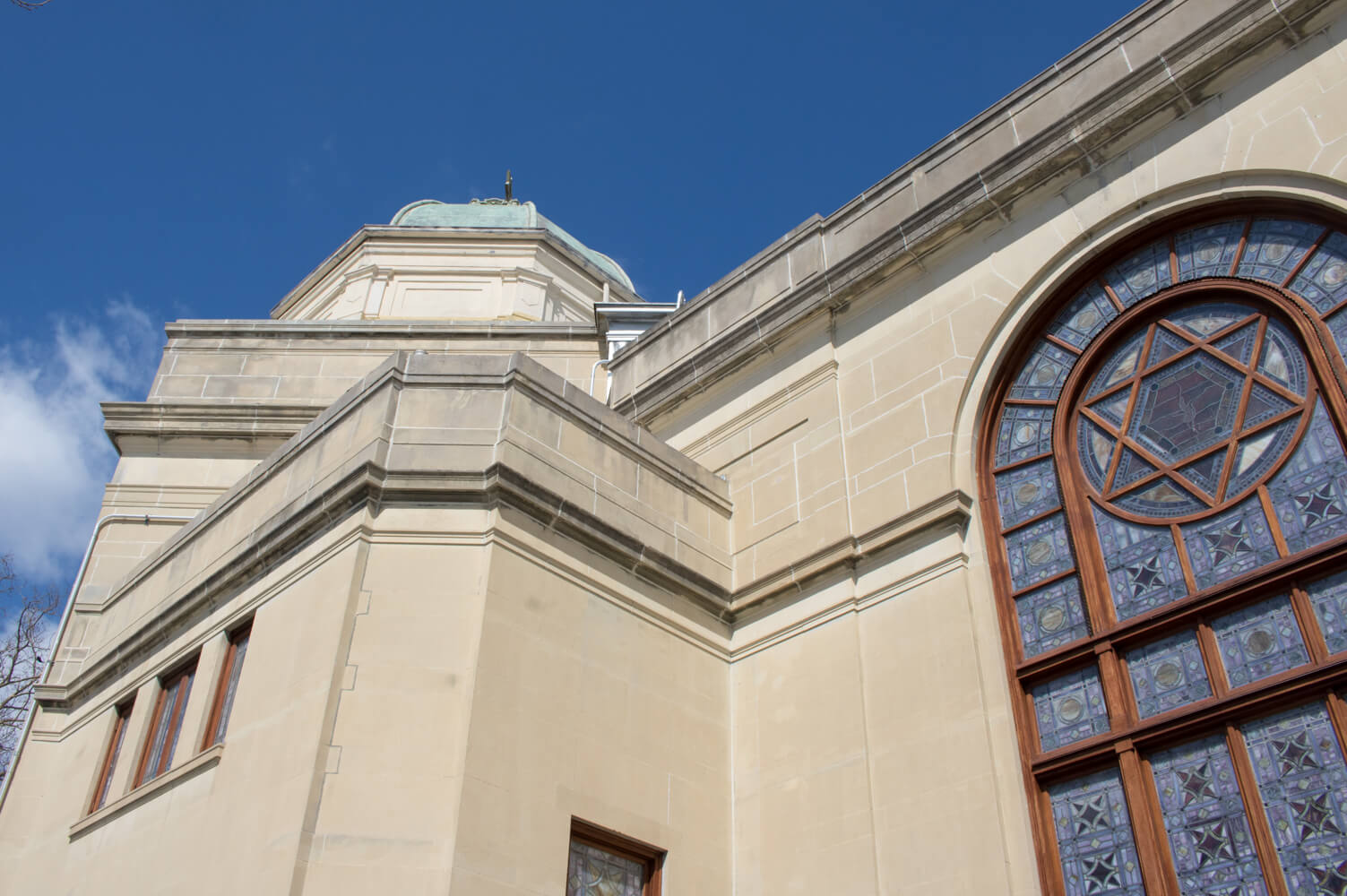
Continuing his education on designing sacred spaces, Roth also designed the First Hungarian Reformed Church in 1915. Roth was born in Gálszécs, Hungary in 1871 and immigrated to the U.S. on his own at the age of 13. The church is on East 69th Street and is his only Christian church. He designed it in a vernacular, folk Hungarian style.
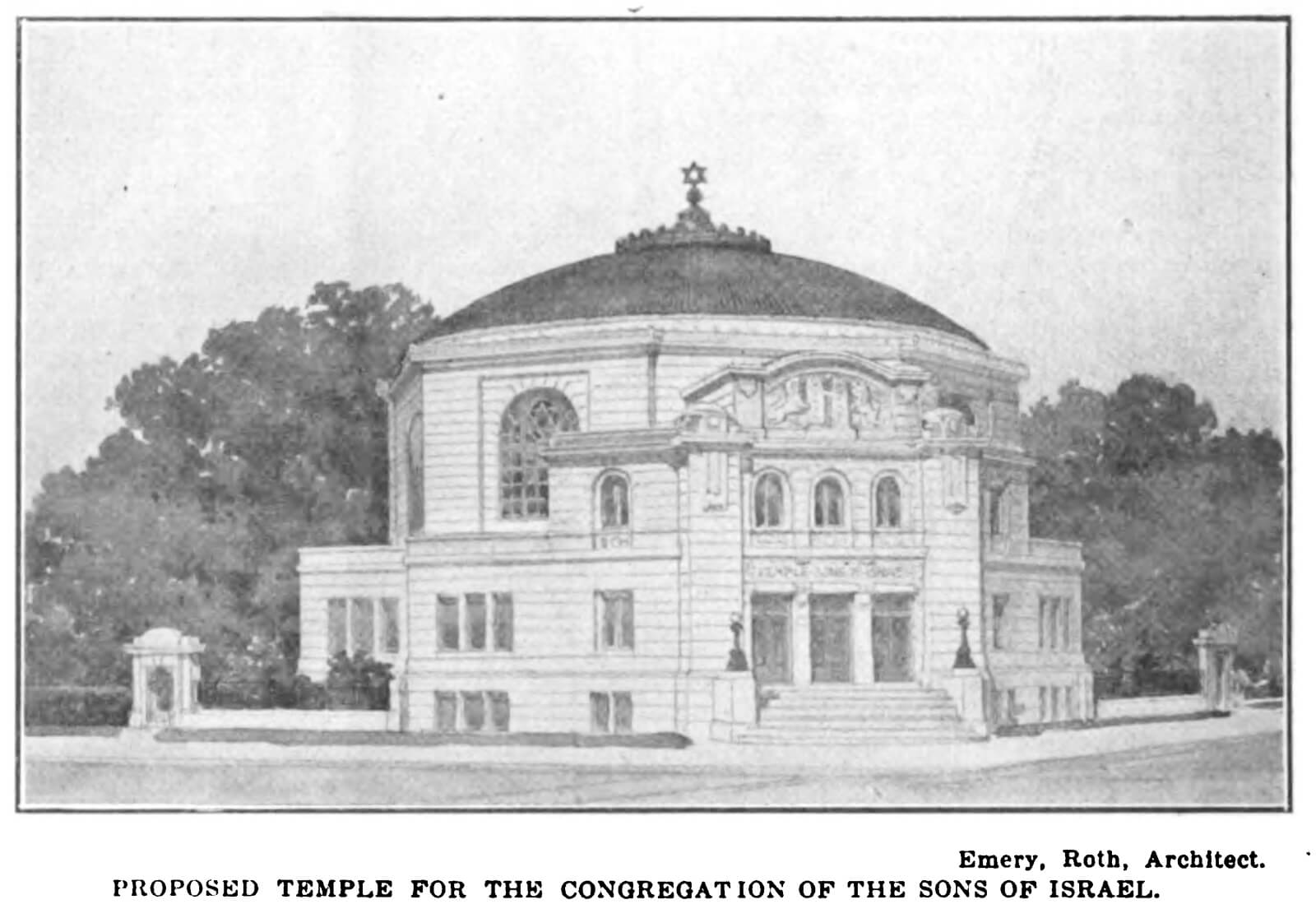
The Congregation Sons of Israel would be anything but vernacular. According to the Real Estate Record and Builder’s Guide, Roth’s original design for the synagogue was a neo-Classical octagonal temple with a domed roof of red Spanish tile. The building would be constructed of limestone, and the large square entrance would form a rectangle with the rest of the building. Inside, the sanctuary space would be completely open under the dome, allowing for an excellent view of the altar and Torah from any seat. Seven sides of the dome arc would be pierced with leaded glass windows that would light the interior.
In addition, the basement level would be only partially below grade, with large windows, allowing for a gathering space, offices and classrooms to be located there. The entire building would be 100 by 100 feet square, and sit on a lot measuring about 194 by 100 feet.
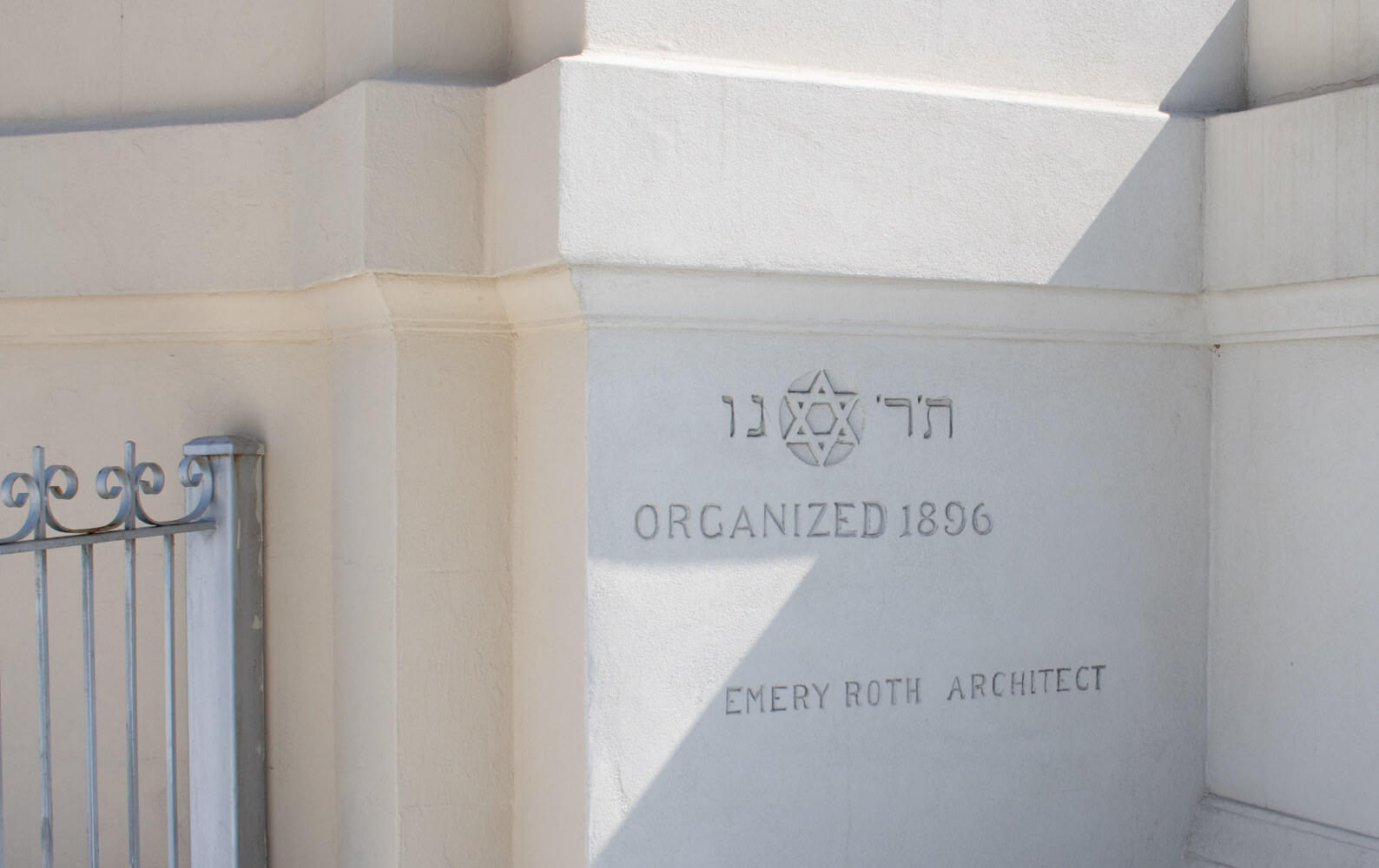
The cornerstone of the synagogue was laid on June 22, 1919. Governor Alfred E. Smith accepted an invitation to attend and speak, as did many other civic and political officials, both Jewish and Gentile. Many Jewish judges were invited, including State Supreme Court Judge Edward Lazansky. Cantor and celebrated tenor Joseph Rosenblatt was there to sing, and led his choir in several selections. All of the officers of the synagogue and leading Jewish religious and secular men and women were there, as well. The cornerstone was laid with great pomp, and the building went up.
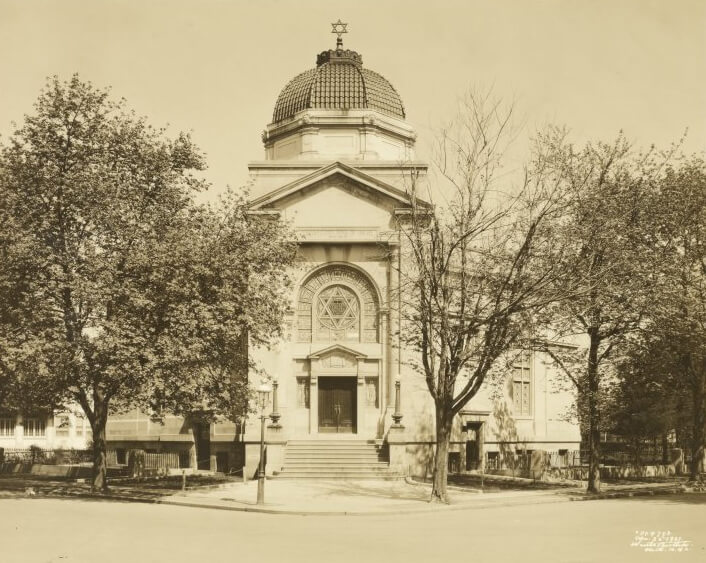
The finished building we see today is quite different from Emery Roth’s design as it was first proposed in 1918. The entrance got much bigger, and the octagon was squared off. The biggest change was that Roth’s wonderful domed sanctuary was scrapped, and a much smaller dome rises behind the pedimented entryway, and the rest of the roof looks flat.
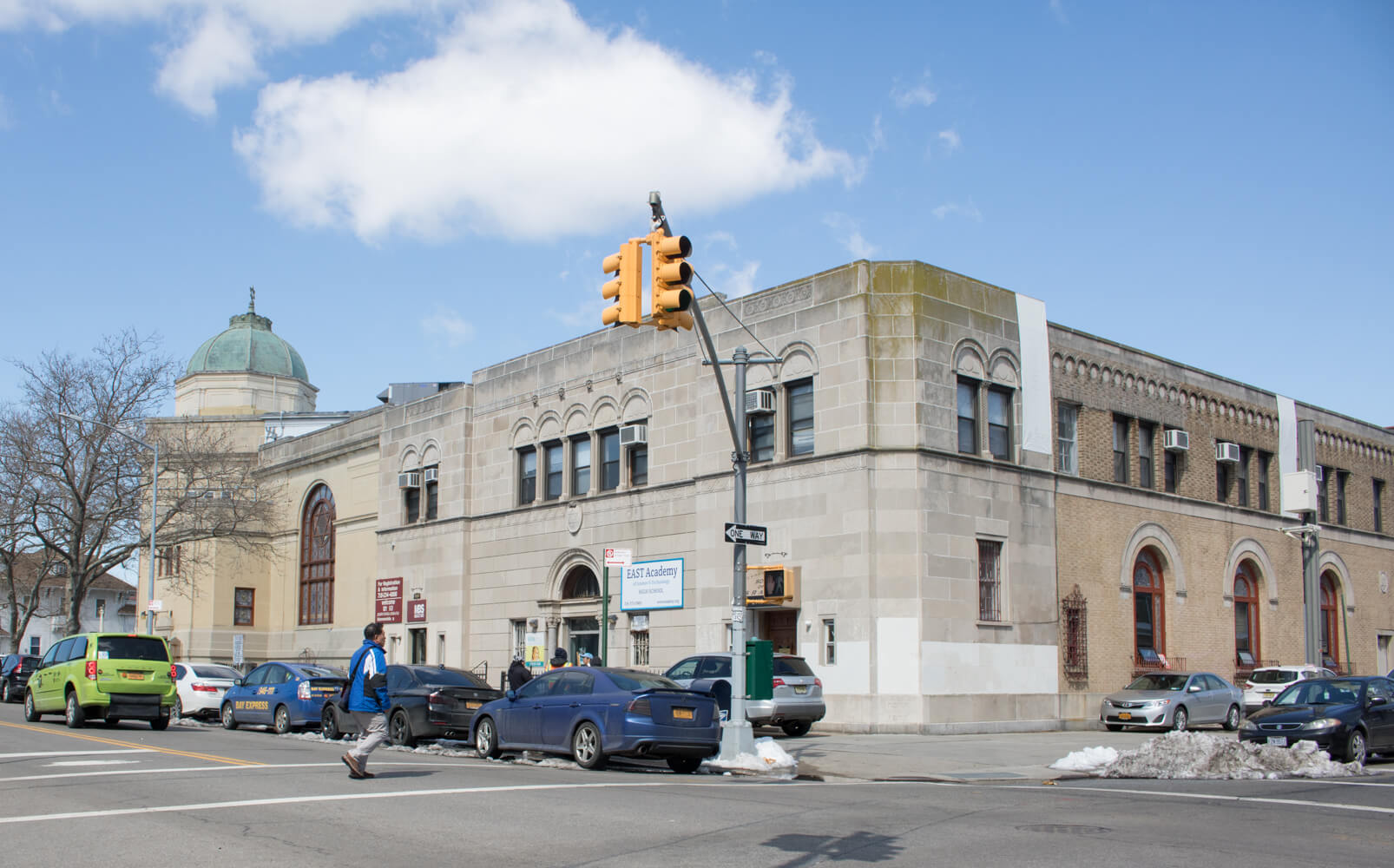
The site was expanded in 1927 with the addition of a Talmud Torah along Benson Avenue. The building now houses the Elite Academy of Science and Technology, a co-ed Jewish High School.
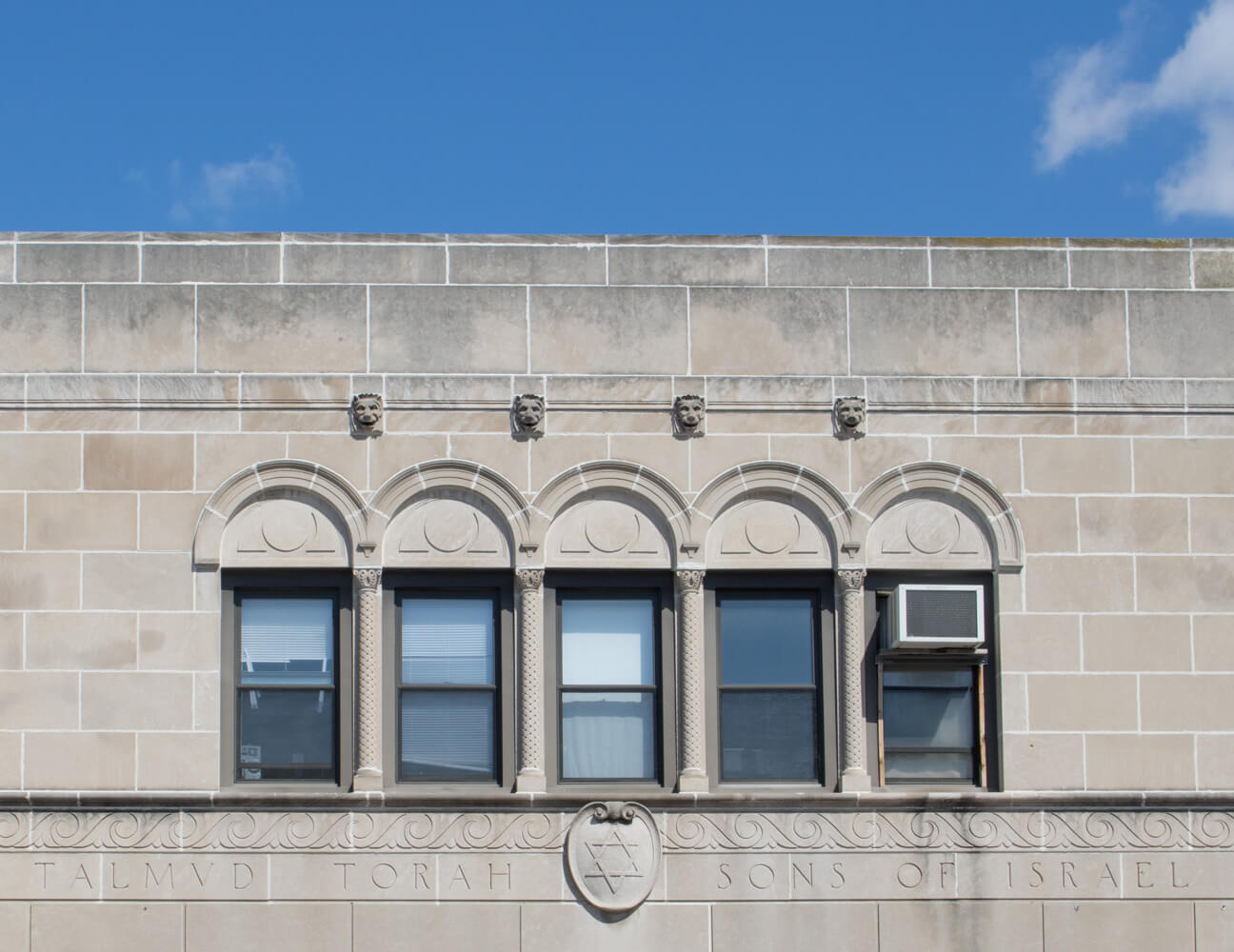
[Photos by Susan De Vries]
Related Stories
- Mother England and the Amusement Park: How Bath Beach Got Its Name
- An Italian Hub and Short-Lived Seaside Resort: How Bensonhurst Got Its Name
- Building of the Day: 35 Prospect Park West
Email tips@brownstoner.com with further comments, questions or tips. Follow Brownstoner on Twitter and Instagram, and like us on Facebook.









What's Your Take? Leave a Comment